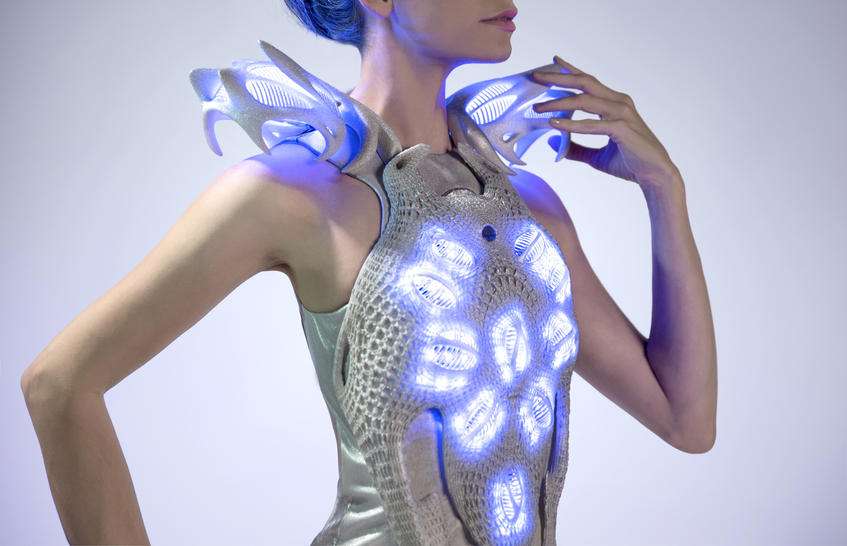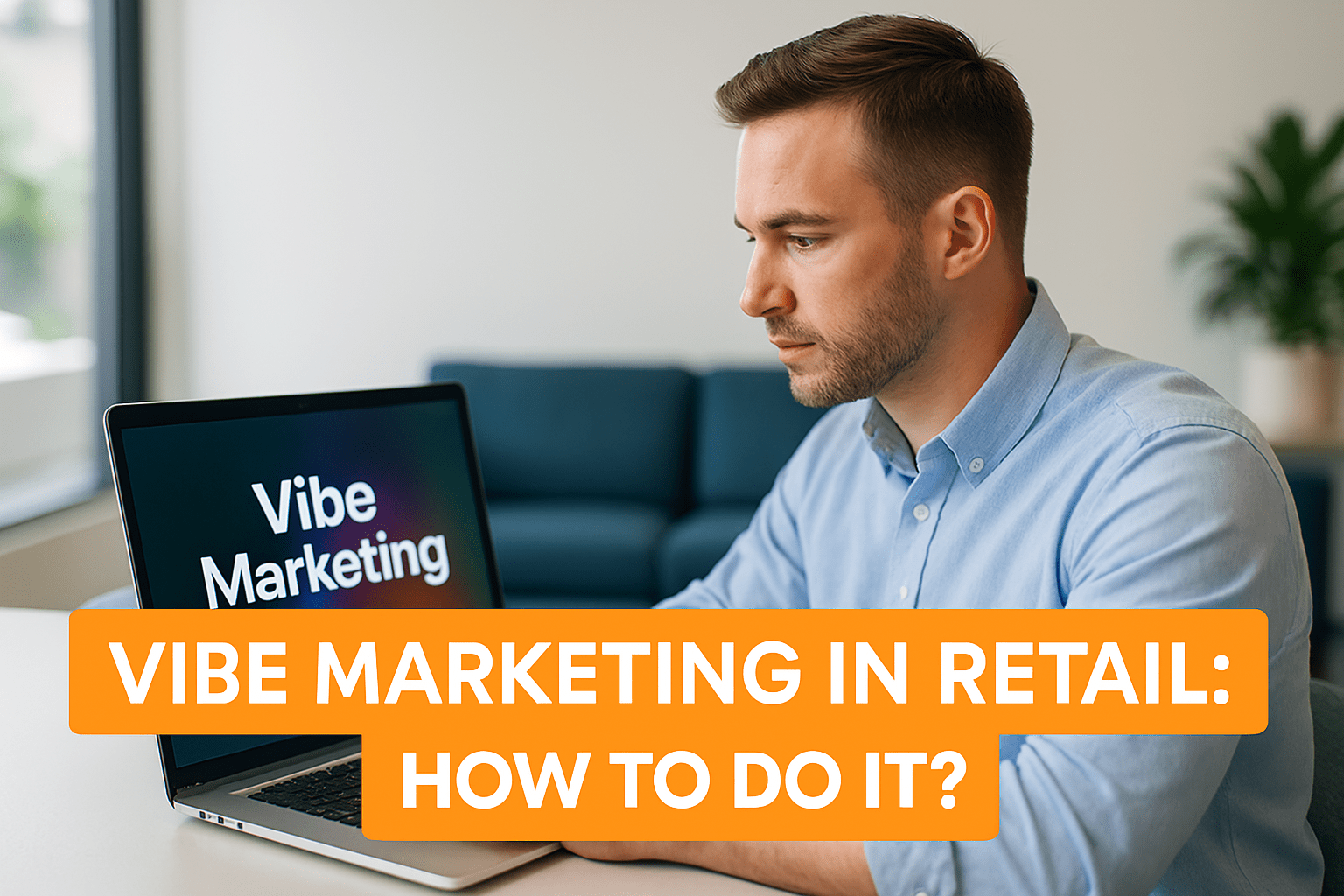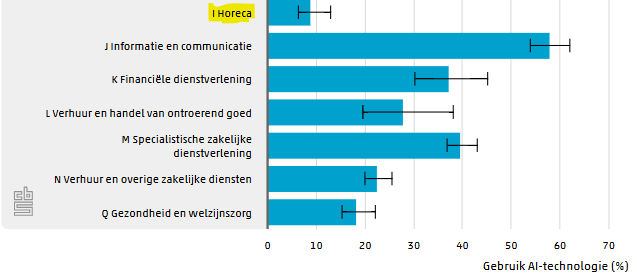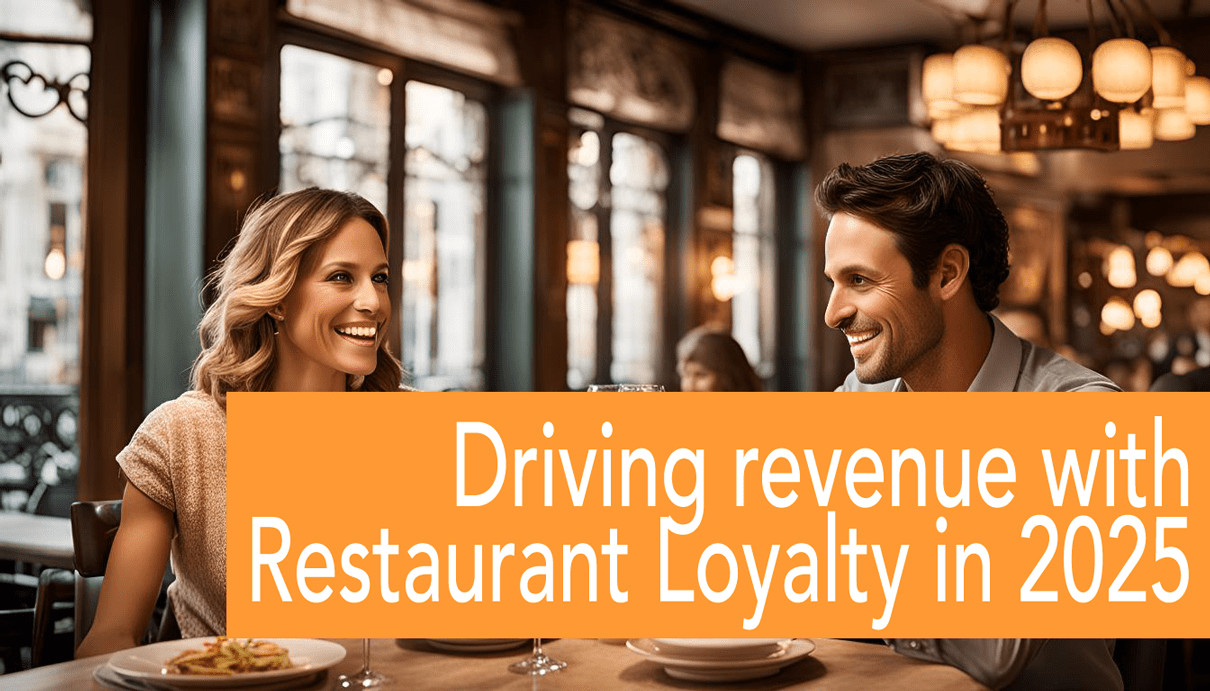A new concept is emerging: vibe marketing. Coined in tech, vibe marketing now describes a hands-on-yet-automated approach to managing customer engagement. In loyalty marketing, it means using intelligent tools to create highly personalized, data-driven programs—without getting lost in technical complexity. Rather than replace marketers, vibe marketing frees them to focus on strategy and creativity. For those looking to scale loyalty efforts with precision and agility, VEMT provides the structure and automation needed to bring the right “vibe” to every customer interaction.

Marketers using Wearable Technology: Getting close to the heart
by Jeroen Nas, December 2015
Wearable technology is growing fast and provides great opportunities for Persuasion Marketing. How close can you get to your customers? And do your customers like that? And who might be in between?
What should you take into account?
In a world that hypes about personalized marketing, one development might still be a little under hyped: the personalization impact of wearable technology. Maybe because after the not so perfect positioning of Google Glass (glassholes) and the serious disappointment of the lack of real value of what the AppleWatch brings people, we expect our customers to be hesitant about accepting new propositions from wearables. Add to this the intimate nature of this technology and there you go: not a topic you want to scream around about as marketers, unless you sell the gear itself. Yet, this stuff is going to change marketing drastically in the years to come and you should prepare. Or should I say (to stay consistent with the hype theme): “Wearable technology will drastically disrupt marketing, and marketers have to act now”.
Clothes to Perfection: who’s the gatekeeper?
So, what is this about? Personal ecosystems – the networks of connected digital (and social) tools that consumers build around themselves – increasingly define who a consumer is, what they do, and how they spend their time and money. Access to that individual consumer is determined by the characteristics of their personal digital ecosystem and marketers should start building strategies to deal with those ecosystems to not lose access. On one hand, there is the promise of a vast amount of direct and personal data, and on the other hand, there is the threat of being locked out and not being able to pass on your marketing message to the individuals in your core segmentation. Wearable technology plays a key role in that story. It develops itself to be the powerful gatekeeper to personal ecosystems, with its sensors, its rules and its connections to other systems.
Data from the heart
Structurally and continuously tapping into personal ecosystems is the ultimate holy marketing grail. Marketers that want to influence individual’s behavior and through them their circle of family, friends, and contacts. The continuous data flow that people create with whatever they are doing and wherever they go, is the key to being able to produce relevant messages and content and send them back again into the platforms closest to the consumers’ heart (and wallet). Having the (exclusive) right to access to a personal ecosystem can truly power personalized marketing and fulfil the promise of real relevancy.
Reality or fiction?
Using data from wearable technology of course does not guarantee good Personalization, but it powers the fundament of what you can do with data: it delivers information about an individual’s location, his emotions, his connections, his agenda and many other contextual variables that draw up a very precise circumstance in which the person is at that moment. Imagine you can power this data flow and improve your responses with predictive algorithms that know about the person’s (recent) past, patterns and his behavior in other contexts. If done well, you can increase relevancy to the maximum, and with that, increase conversion to insane heights as well. In theory, that is. It sounds a bit too good to be true, right?
What is keeping Marketers from creating this Personalization Walhalla right now? Why don’t we hand out smartwatches or smart clothes for free to make people wear them and share their heartbeats with us today?
Why would Marketers get access?
The highly connected universe many consumers live in can connect consumers with…. what? Where do they connect to? Almost everything they do, say, play, view leaves a continuous trail of personal data to be processed, aggregated, modeled and made available for marketers to target content or offers back to the data producers: consumers. In groups or as individuals.
The trouble for marketers is that the messages they want to send out do not inform consumers about the people or things they *really* care about and that they want to be connected with. Brands do not have the position their friends and family have. In other words: unless it’s about making connections between their friends, what will be the trigger for consumers to connect their personal ecosystem with your brand’s eager promises? Marketers should start working on creating that proposition. And it’s not easy. Nike is trying hard with sports clothes… but next to that, it is not that easy to find positive, structural marketing efforts by big brands to connect with personal ecosystems. Other than Google Glass, that is.
Personal Ecosystems available for marketers now
Which consumer access strategy to personal ecosystems do you choose if you are not big enough to create a platform or ecosystem of your own? There are many ways to connect and many evolving platforms to connect to. These are the some of the most used interconnected personal ecosystems right now:
- Device driven networks: These are now based around smartphones and smart watches and are highly personalized. Already at this moments, the networks accessed by these devices take more attention than spouses and kids, and this will increase rapidly. Newer wearable technology – like smart clothes and fitness trackers- evolves from here, but will create competing ecosystems. Generally, brand marketers only have indirect access to consumers through advertising and partnerships, which are costly routes to the consumer hearts and minds.
- The Facebook network: The ultimate walled garden. From FB itself to Whatsapp and Instagram. It’s the emotional suburban paradise: Consumers live drama and are intimate like no other in this social platform, while their BFF’s helpfully monitor their daily developments and are jealous about it along the way. Google, Microsoft, Samsung and Apple are currently quite unsuccessful in trying to keep the gap small but these players still have options. Generally, brand marketers only have indirect access to consumers through (costly) advertising. Target refinement options are improving fast, and so do the related and repeated fees.
- Benefit networks: consumers make very aware choices to connect to one or more benefit networks, among them loyalty programs, miles programs, coupon apps, voucher wallets, etc. Exchange of purchases, (newsletter) preferences, location and wish lists starts to turn into virtual personal ecosystems that increasingly control access to personalized messaging towards the consumer. Benefit networks form the most direct access The basis of benefit networks is a trade between companies and individuals about status, rewards and data. Sometimes these are aggregated wallets, or they are brand specific VIP or loyalty programs which are close enough to personal (quest for tangible) identity to get a real position in the consumer behavior. The most effective benefit networks offer a mix of (local) benefits and rewards, technology and a social component. These networks are the best option for Marketers to interact with consumers directly and they deliver by far the best ROI. Setting up such a program is a longer term commitment though, something that not all CMO’s are willing to make. Brand owned sensors (like retail used beacons, parking sensors and camera based monitoring) will increase monitoring and interaction options for marketers quickly, having the potential to build tight connections with personal ecosystems.
- Mobile Wallets: When format wars settle, consumers will all end up with one or more of these on their devices. These wallets will connect them with benefit networks and financial ecosystems. These wallets do form another great option for marketers to reach out to consumer details, although the detailed product overview that benefit networks offer are usually lacking. The gatekeepers of these networks might be hesitant to open up their networks to marketers, realizing that consumers do not want their data to be out of their control without making choices about it themselves.
- Home networks: In homes, consumers increasingly install devices that create new eco-systems, like smart TV’s, NEST and their clones and alarm systems. Just like financial eco systems, these know a lot about our intimate habits and private lives. Options for marketers are still quite limited, but will evolve as home networks become more sophisticated rapidly in the coming 1-2 years.
Marketing Data Aggregators: The Personal Ecosystem Players.
‘Marketing Data Aggregators’ is not a commonly accepted term yet in the perspective of Personal Ecosystems. It should become one fast. There already are companies that have gathered a serious amount of intimate data about consumers and that are connected to some of their current or future eco-systems. The top 8 of these companies are not uncommon names:
- Samsung
- Apple
- PayPal
- WeChat /Tencent (in China)
- IBM
- Nike
They (mainly) own or connect device based personal ecosystems with the outside world, which makes them to be gatekeepers able to manage how marketers can offer promotions and how people share information between ecosystems. Marketers pay for access and will increasingly do so while the gatekeepers consolidate their position. Device based networks are now – and will remain to be for some time – the most personal ecosystems. There is light around the corner though, as the current device based personal ecosystems get disrupted by some newer players in the arena. The annually published Marketing Technology Landscape by Scott Brinker will most likely add wearable technology or Personal Ecosystems quickly as part of the marketing technology stack.
New Smart Kids on the Block
New wearables pop up daily. A newer category are next generation fitness trackers and smart clothes. You can see them as more advanced successors of the first generation wearable devices which are purely based on smart phone processing power and sensor capabilities. Phone centricity has not disappeared yet, but the phone gatekeepers have less influence on the data streams now.
Activity trackers follow consumers around wherever they go in ‘effort mode’. From Runkeeper to Fitbit; they track & trace and carefully build up a history of efforts to shape up a bit. And how disciplined consumers are in doing this, or not. Trackers generate very interesting marketing data, tell a lot about moods or how successful people might feel at certain moments. Health sensors complete the monitoring of stress levels, heartbeats and temperature.
Larger companies are quickly moving into this space, sometimes unexpectedly for outsiders. IBM announced using health and fitness data obtained from personal monitoring devices in partnership with Apple, launching “new employee health and wellness management solutions.” Can you imagine what this data will deliver, especially when it will be processed by Watson? Would consumers like to provide this type of data to insurance companies to get a discount… or maybe not? Are they interested in promotions when they feel thirsty, tired, warm, stressed or angry? Maybe not now, but that depends on the relevancy of those promotions, I predict you.
More than devices strapped to our wrists, ears and feet, smart clothes have the capabilities to integrate tracking our heart rates, monitoring our emotions and paying for our coffees.
Luxury brand Ralph Lauren has developed a PoloTech smart shirt with sensor specialist OM Signal. This resulted in a shirt with conductive silver-coated fibers acting as sensors that – in real time – stream data. The nylon shirt tracks distance, breathing rate, burned calories, heart rate, stress rate and movement intensity. It offers feedback on training efforts and can audibly tell users to push a little harder. It doesn’t advice yet to take a Coke because ‘you deserved it’ after a training, but that can’t be far away.
Other products from smaller vendors are shorts, dresses and socks filled with sensors capable of tracking running, feet pressure, cadence, bounce, ground contact time, braking, pelvic rotation and stride length. Some offer real time audio feedback via apps and headphones. They can measure the distance to other people (social context) and can automatically make pictures of situations when sensors indicate stress or sudden movements. They offer great opportunities to security and monitoring services, as well as to sports coaches, health monitoring and of course to Marketers that can make good use of this very specific contextual and intimate data. Imagine the impact on social settings if the color of a shirt indicates emotions or needs, and prepare to what you as marketer can do with that.
The Losers in this Battle
The previous generation of marketing data aggregators are so far missing out the B2C area. Global companies like Experian are quickly moving into creating benefit networks to compensate for the relevancy losses in their traditional postal code based databases, which are losing value with light speed. Big players like them will most likely survive because they can invest in new skill sets and use their existing client relationships to deep sell these skills. Local players will never know what hit them, while they maintain to try to sell their phonebooks, flyer distribution networks, demographic databases to SMB’s as a kind of poor man’s access to consumers. They will be made obliterate fast by localized (but centrally managed) benefit networks and/or creators of data networks in the B2B area, like SalesForce, VEMT and Adobe.
Personal Ecosystems in the B2B area
The B2B area seems to be a more difficult area for marketers to play the Personal Ecosystem game. Boundaries on which title to approach people are vague and people are reluctant to share business related information with others, usually even prohibited to do so by their employers. LinkedIn is increasingly connecting with other service to form somewhat of a personal business ecosystem, but it doesn’t even come close to wearable technology and does not generate contextual information.
Benefit networks with their high RPI and long term focus seem to be the best bet for marketers in this area. Office Depot’s (Viking) Rewards Scheme that collects personal data about individual buyers in companies is a great example on how to strategically use longer term behavioral data collection to improve the connection with buyers. These type of programs are far off using wearables though at this moment.
Marketing Responsibilities
The ability to aggregate so many aspects of consumers lives provides great options, but also huge responsibilities. Increasing relevancy is good for all stakeholders involved, but missing the right context or failed interpretations could lead to unwanted spam, privacy intrusion and data leaks. All of those will instantly destroy trust from consumers at levels just as impressive as the opportunities promise.
Operational challenges are ahead as well: negotiating about data exchange at scale with individuals is something most marketing departments are not prepared for yet, and even if they want to, they have no clue where to start with. Consumers start to be empowered, through technology and supported by companies that offer to manage information access on their behalf, creating new gatekeepers in the chain, with a different agenda.
Most marketers realize connections are about trust, intimacy, caring and long term relationships. Not so many know how to put that into action and work from these starting points without any compromise. Not any. Temptations to play power games and misusing data for short term successes will fire back and consumers will increasingly control the levers on what they want marketers to see, what they want to share, and how they want to buy your products and services.
Personal Commerce Opportunities for Marketers
Through connected personal ecosystems, we are better positioned to (automatically) buy anything we like at any time we like. Impulse buying as we know it now will be regarded an understatement to what it will become soon. Consumers will increasingly manage the terms on which they are willing to receive offers. The challenge for marketers is to stay close, relevant and persuasive, making use of the data consumers are willing to share with us, maybe as part of a trade off in which we can offer better benefits to consumers through benefit networks.
Personal ecosystems will increasingly act as gatekeepers, buying agents, filter managers and will shape the best offers based on well-articulated needs and contexts. What is now a simple wish list in a webshop or loyalty program, will be an automated negotiating agent not too far from now. United consumers and new marketplaces increasingly accumulate buying power and will be fueled by apps that support them in doing so. Mortgage rates based on your friends credit ratings are already a reality: sharing eco-systems will make them a common feature.
Marketers should start doing this today: create autonomous access
Personal ecosystems, or whatever they will be called, are not going away. As a marketer, you will have to battle for access to them, and will have to negotiate the most favorable terms possible. This requires long term planning: Advertising costs are the punishment for low retention. Those costs will increase if you do not create autonomous access to consumers or professional buyers yourself. Wearable technology will be key to this in the B2C area in the coming years. Creating trust and offering true value are just the simple basics. On top of that, you need to be a player – or to partner with one on well negotiated terms – that can be or pass gatekeepers of personal ecosystems. For brand marketers and retailers, creating or participating in, benefit networks offer the best bets. A persuasive program that teaches your customers about you, and more importantly, offers them the opportunity to teach you about their preferences and contexts, will be the best investment you can make in the coming 2 years. The program should be very open and flexible to use data from just any sensor and personal ecosystem you can connect to it to make sure consumers want to connect and stay connected with you. On their terms.
Image credits: A mind-controlled dress created by Dutch designer Anouk Wipprecht: The Synapse.





